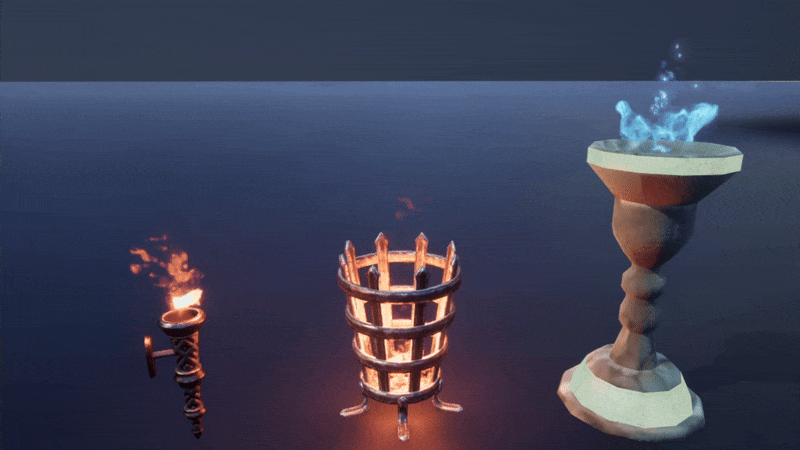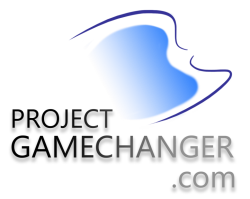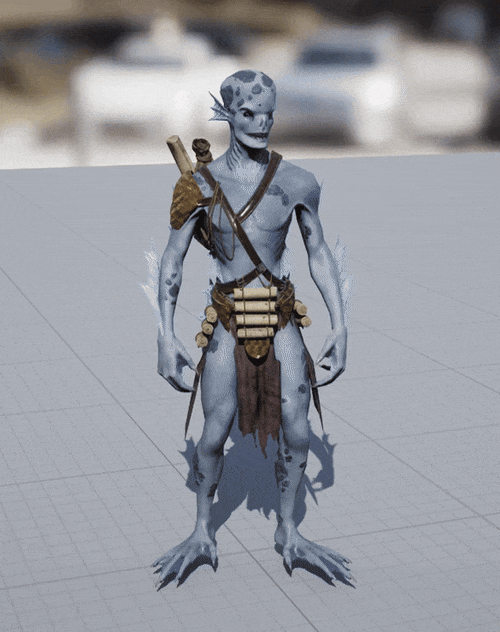
Monthly Devlog | September 2025 | No. 80

September marked another month of steady progress across all departments as development on Depths of Erendorn continued to gather pace. From the addition of new gear sets and animation polish to backend improvements and performance upgrades, each team brought the game closer to a more complete and playable experience. Class identity was a strong focus throughout the month, with work dedicated to sculpting unique equipment, defining tailored sound profiles, and expanding the animation library for both player characters and enemies. Meanwhile, several key systems, such as quest progression, server stability, and visual rendering, received meaningful updates aimed at improving functionality and future scalability. As internal testing efforts ramp up, these developments provide a strong foundation for the next stage of gameplay integration and feedback. As always, join us on Facebook, Twitter, Instagram, and Reddit for daily updates on Depths of Erendorn. Alternatively, join our Discord for all the latest! – now let’s get into it!
3D Modelling
Throughout September, the 3D Modelling team dedicated their efforts to developing a new series of equipment sets for the Forest Druid, further expanding the class’s visual identity within the world of Erendorn. Beginning with the sculpt of the first set, the team focused on incorporating organic forms, layered details, and natural motifs that reflect the Druid’s deep connection to the wilderness. As the month progressed, subsequent sets were sculpted in turn, each building on the visual themes established by the last while introducing new silhouettes and surface textures to support player customisation and class distinction. With the final set of this batch now underway, the Forest Druid’s gear collection is taking shape as a cohesive and expressive extension of the character, contributing to the growing pool of wearable assets designed to enrich both gameplay and worldbuilding.
Set Piece Design
During September, the Set Piece Design team focused on expanding the structural diversity of Erendorn’s settlements by developing a new collection of turf houses. Four unique variants were completed over the course of the month, each designed to integrate naturally with the surrounding landscape and reinforce the grounded, handcrafted aesthetic of the game’s more rural regions. These homes aim to enrich the environmental storytelling of Erendorn, offering players a more immersive sense of place. To complement the architectural work, the team also began creating custom grass patch assets tailored to sit atop the roofs of these turf structures. This addition enhances the overgrown, earthbound character of the homes while bringing added cohesion to the surrounding environment. Together, these updates support the ongoing goal of building believable and visually layered spaces throughout the game world.

Programming
Client
September saw the Client team concentrate on refining the questing experience and strengthening key UI systems across the game. Much of the month was dedicated to extensive testing and logging of quest-related behaviour, with the team identifying and addressing bugs affecting selection, abandonment, and fulfilment tracking. Several issues were resolved, including problems with unresponsive quest entries and incorrect quest ID handling, both of which were interfering with progression updates. Alongside this, the team expanded the UI’s responsiveness by enabling real-time updates across the map and fast travel systems, allowing quest states, marker visibility, and regional XP data to reflect backend changes more accurately. Additional investigation was also carried out on a levelling issue flagged during internal playtests, supporting broader efforts to finalise core progression mechanics and improve stability across the client.
Server
The Server team made a wide range of backend improvements and bug fixes aimed at strengthening the game’s overall stability and preparing for future testing milestones. With the recent stat system refactor completed, final adjustments ensured character data, including starting gold and stat inheritance, was correctly loaded and saved. Attention then shifted to key performance improvements, including a refactor of the Perlin noise system used to calculate world XP variation, and optimisations to how spawned events are stored within world chunks. The team also expanded performance tracking tools, introducing command execution metrics and pathfinding reporting to better inform upcoming optimisation passes. A number of persistent bugs were addressed throughout the month, including issues with party disbanding, event-triggered dungeon spawns, and projectile behaviour during combat. Additional updates refined event activation logic, improved how quest progress is tracked and communicated to the client, and corrected several issues with entity spawning and tile occupation. Together, these updates contribute to a more responsive, scalable, and test-ready server architecture.
Sound Design
Over the course of September, the Sound team advanced their work on shaping the distinct audio identities of Erendorn’s playable characters, with a particular focus on the Forest Druid. A suite of new ability sounds was developed, including effects for King Cobra Form, Conjured Carnivorous Plant, and Power Surge, each designed to reflect the impact and personality of their respective spells. The team also applied their “character tone” approach to the Forest Druid, refining transients and overall sound design to ensure a cohesive and recognisable auditory signature across the class’s abilities. This work builds on previous efforts with the Zentragal and continues to support the goal of giving each character a unique place within Erendorn’s soundscape. In addition to ability design, time was dedicated to reviewing the requirements for upcoming world events, laying the groundwork for future audio integration across Erendorn’s expanding content.
Environment Art
Throughout September, the Environment team directed their efforts toward improving rendering performance and visual consistency across Erendorn. A major focus was the optimisation of post-processing systems, where significant frame time was recovered by removing costly custom materials and refining anti-aliasing quality settings under TSR. Additional savings were achieved through updates to the lighting system, including a switch to Lumen’s Surface Cache mode and optimised foliage interaction, resulting in smoother visuals with minimal cost. The team also transitioned from Distance Field Ambient Occlusion to Virtual Shadow Maps to improve the efficiency of dynamic shadows. Nanite settings were further adjusted by lowering the maximum pixels per edge, helping reduce overhead in the visbuffer and basepass stages. These targeted optimisations not only enhance overall performance but also ensure that visual fidelity remains high as the game world continues to expand.

Animation
Throughout September, the Animation team focused on refining existing character assets and expanding the range of animated creatures in Erendorn. The Ogre received particular attention this month, with updates to its rig that included revised skinning and the addition of a new belly control bone to improve motion fidelity. This enhancement allows for more natural movement, adding weight and nuance to the creature’s animations. While integration of the new rig was briefly delayed by technical issues, the team laid the groundwork for its completion in the near future. Alongside this, new Watertarg variants were brought into the engine, further increasing the diversity of enemies ready for gameplay. The team also spent time polishing legacy animations, including a rework of the Jab attack, to ensure smoother and more impactful motion. These efforts support the ongoing goal of raising the quality and consistency of Erendorn’s animation library across both player characters and enemies.
Visual Effects
Over the course of September, the VFX team focused on improving the efficiency and visual consistency of fire-based effects across Erendorn. Central to this work was the creation of a new fire emitter using flipbook animations, designed to achieve a visually convincing flame aesthetic while significantly reducing performance cost. This reworked solution draws inspiration from the current in-game fire effect, retaining its visual clarity with a much lighter impact on system resources. With the new version now in a stable and visually effective state, efforts have shifted toward replacing legacy emitters throughout the project’s blueprints. This update supports both gameplay readability and technical optimisation, paving the way for more scalable and responsive visual effects as development continues.

That’s it for this month’s devlog, but have you seen our monthly roundup of August yet?!















